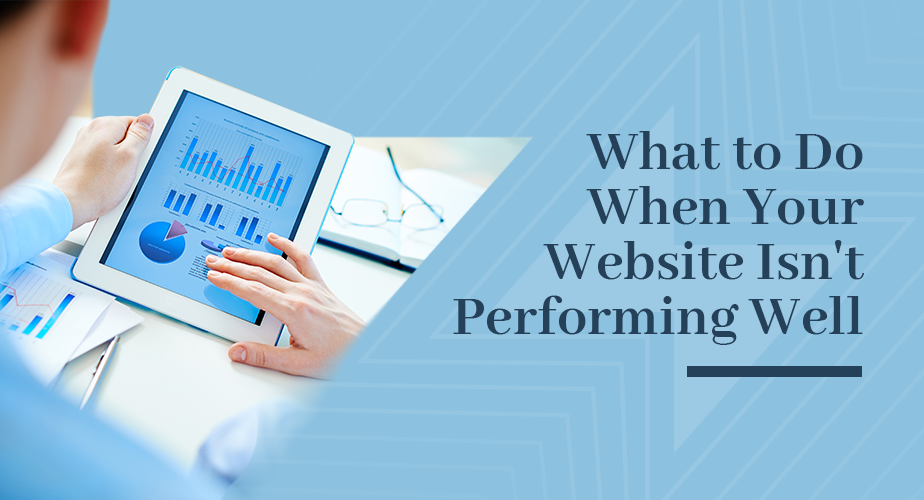Your website serves as the digital front door of your business. When it doesn't perform well, it can lead to frustration for both you and your visitors. With users expecting fast loading times and seamless experiences, even minor hiccups can create negative impressions and affect how people view your brand. It's just like visiting a store; if you keep them waiting and make navigation difficult, they'll probably leave.
Consider the implications of a poorly performing site. Slow speeds may cause potential customers to click away before even seeing what you offer. High bounce rates mean less engagement, and this lost engagement can translate into lost sales. Search engines like Google take notice too, ranking your site lower if it consistently underperforms, potentially leading to decreased visibility.
Identifying Performance Issues
Recognizing when your website is underperforming is the first step to improving it. If your pages are loading at a snail's pace or visitors are leaving in droves after viewing just one page, these are red flags. Dive deeper with tools that can help pinpoint what's going wrong. Tools like Google Analytics can shed light on user behavior, showing where visitors drop off and how long they stick around. Similarly, PageSpeed Insights can offer tangible metrics on how fast or slow your site is and suggest areas for improvement.
Look out for these key indicators:
- Slow load times: Pages taking more than a few seconds to load can drive users away.
- High bounce rates: If visitors leave after viewing just one page, something's amiss.
- Low conversion rates: If visitors aren't turning into customers or taking desired actions, your site may need adjustments.
Once you identify the issues, you're better equipped to decide what changes need making. Sometimes, the problem might be technical, like server issues or too many HTTP requests. Other times, it could be the content itself, like unoptimized images that drag down speed.
Common Causes of Poor Website Performance
Understanding the root causes of performance issues can guide you in making the necessary adjustments. Let’s explore some common culprits:
1. Slow Server Response Times
Websites that don't respond quickly often suffer due to inefficient servers. This can be akin to having a slow cashier at the store, creating a bottleneck that frustrates visitors. Switching to a better hosting provider or optimizing your current server settings can improve this.
2. Unoptimized Images and Media Files
Large, hefty image files are notorious for slowing things down. As an example, think of loading a high-definition video on a dial-up connection; it just doesn't work well. Compress your images and videos without sacrificing quality to improve load speed.
3. Excessive HTTP Requests
If your webpage is making too many requests to load items like scripts, stylesheets, and images, it can bog down load times. Reducing these requests can streamline loading processes.
4. Bloated Code and Scripts
Overly complex code can also be a stumbling block. Imagine trying to find a book in a library filled with disorganized shelves. Keeping code clean and concise makes it easier for browsers to display your page efficiently.
By tackling each of these areas, you can significantly boost how your website performs and create a more pleasant experience for your visitors.
Steps to Improve Website Performance
Once you've nailed down the issues plaguing your website, it's time to tackle them head-on. This is where some straightforward strategies can make a real difference. First on the agenda is optimizing your hosting solution. If your hosting is slower than a turtle, even the most optimized site won’t run smoothly. Moving to a reputable hosting provider can work wonders for page speed and reliability.
Look at image and media optimization next. Large images are like anchors that drag down your site's performance. Start by compressing media files without losing quality. Tools are available to help with this, ensuring that each image is web-friendly and ready for quick loading.
Consider minifying and combining files. This means trimming the fat off unnecessary code and bundling files like HTML, CSS, and JavaScript. Less code makes for faster queries, which means faster page loads. If you’re not experienced with coding, professional help might be wise here.
Finally, consider leveraging browser caching. Caching stores web files temporarily on a user’s device, so on their next visit, pages load faster because requests to the server are minimized. You only have to do it once, but it can provide ongoing speed benefits.
When to Seek Professional Help
Sometimes, despite your best efforts, certain website issues require professional expertise. If after tuning those basic elements your site still struggles, it might be time to call in the pros.
There are particular scenarios where outside help shines, like when your website's architecture is all over the place. Experienced developers can streamline your site’s design, ensuring it runs smoothly across devices and platforms.
Complex technical issues that are outside your comfort zone, such as significant speed issues or constant crashes, are another cue to consider professional help. There might be deeper problems in the structure or server-side configurations that can’t be handled with basic skills.
On top of fixing immediate performance issues, skilled professionals can enhance your site’s efficiency over time, implementing proactive measures to prevent future issues. They can see the forest for the trees, providing solutions you might not have considered.
Maximizing Your Website's Potential
Getting your website running smoothly is just the beginning. Regular maintenance and adaptation keep it thriving in the ever-changing online landscape. Keep an eye on performance analytics regularly. Spotting little problems before they grow into big ones is key. Experiment with your content strategy too. High-quality, engaging content keeps visitors interested, and paired with a well-functioning site, it can boost your search engine rankings.
Think like your visitors. Their experience dictates your site’s success, so make choices that prioritize their needs. Regular testing and updates ensure your site keeps up with both their expectations and technological advances. It’s a bit like tending to a garden; with time and care, you can make it flourish beautifully.
Final touches on improving your website performance can make a significant difference. If you're looking for an affordable way to elevate your site’s functionality and appearance, explore our cheap web development services. At Dingus & Zazzy, we bring expertise to ensure your site meets its full potential and delivers an exceptional experience to every visitor.







